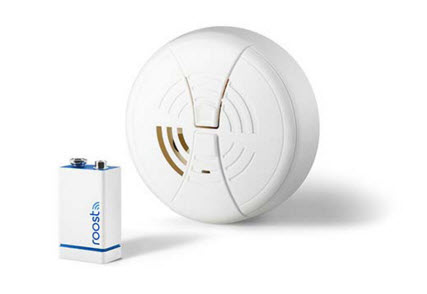“Alarming” Advice from a PLM Operations Manager
 Roost is a start-up technology company headquartered in Sunnyvale, CA. They have developed a unique, patent-pending connected platform that delivers the ultimate in installation simplicity and the most affordable way for consumers to enter the smart home space.
Roost is a start-up technology company headquartered in Sunnyvale, CA. They have developed a unique, patent-pending connected platform that delivers the ultimate in installation simplicity and the most affordable way for consumers to enter the smart home space.
Here’s part two of our interview with Roost’s VP of Operations Jim Van Patten who shares the keys to succeeding as an operations manager at an innovative product company. His challenges and concerns managing his suppliers’ suppliers (brace yourself for shameless Arena promotion) are exactly why we created Arena Exchange, which gives OEMs a secure, low cost, flexible environment to initiate collaboration with multiple users, at all differing supplier levels, throughout their global supply chain.
Arena: Tell me more about some of the operational challenges you face.
Van Patten: Well, there are basically two kinds of people in a business. People that make money and people that spend it just to simplify things. Operations managers are the people that spend it. We are successful if we are able to do more with less. Continually finding ways of doing more with less is the heart of an operations job and I’m continually rethinking our supply chain strategy.
Arena: What are the “what-ifs” you face?
Van Patten: What if I packaged it in China instead of locally? What if I had 3PL customized, localized packaging in Europe and in the United States? What would that look like? What would that cost? What would happen if I created a partial product, kitted it in China, and then packaged it and shipped somewhere else? Those are the kinds of decisions that you make on a monthly basis as events change. Costs go up.
Arena: We notice that many OEMs struggle to have visibility into their suppliers’ suppliers. Do you find this is true?
Van Patten: I look at contract manufacturers and how I manage my supply base.
So, if I put all of my suppliers and sub-suppliers in China what does that mean if there’s some kind of geopolitical event that closes the borders for a week or if China decides to move most of its manufacturing to the interior, which it’s sort of in the process of doing now, or if I find my Chinese supplier actually has a silent partner that decides they’re going to take over most of their capacity and I have to wait to see what happens. How do I mitigate that risk? Again, it’s an ongoing decision. It’s the stuff that keeps me up at night.
Arena: How has Arena PLM helped?
Van Patten: I use Arena as a way of communicating the latest bill of materials (BOM) to our suppliers. All our suppliers have access. They can log in and get the information they need. Exchanging sensitive product information over email is deadly.
Arena: You do something unique with naming conventions, correct?
Van Patten: I have grey hair from the previous PLM systems I’ve used in the past. And we all have a different take on part number naming conventions. Our shippable product is a 900 level product in our part numbers. We’re putting some intelligence in the 900 levels so we can communicate with each other a little faster and also have the 900s and the 800s link a little bit better so we can avoid mistakes in what we order and what we ship. Our goal is to make things easily recognizable to avoid making mistakes down the line.
Arena: Has Arena PLM helped remove any potential for wrong parts?
Van Patten: It’s flexible enough where we can decide how to make it work for our business. The naming convention I use with Arena PLM makes sense and helps our product line identify the part throughout the various stages and distribution.
Next week we continue our conversation with Jim and share his PLM best practices. You don’t want to miss out on his tips, so be sure to subscribe to our blog posts.


